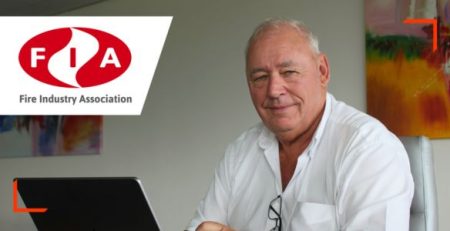Martyn’s Law – Regulated Voice Alarm and Sound Systems for Emergency Purposes
Martyn’s Law – Regulated Voice Alarm and Sound Systems for Emergency Purposes
Many of you may have heard about Martyn’s Law, officially known as the Terrorism (Protection of Premises) Act 2025, which has now received royal assent. This Act fulfils the Government’s manifesto pledge to enhance the security of public premises and events.
The name Martyn’s Law, honours Figen Murray, the mother of Martyn Hett, an Ariana Grande fan tragically killed during the Manchester Arena attack.
The Act introduces a series of requirements for venue operators where there will be more than 200 guests. Venues with a capacity of 800 or more will face even stricter regulations.
The Institute of Sound, Communications and Visual Engineers (ISCVE) is actively engaged with this legislation, as it encourages venues to adopt procedures aimed at minimising the risk of physical harm to individuals during emergencies. These procedures include evacuation, invacuation (moving people to a safe location), locking down premises and communicating effectively with individuals on-site. The implementation of these procedures will significantly benefit from sound systems, allowing for clear communication to instruct visitors on evacuation or to reassure them in an emergency.
These new regulations will come into effect in two years. The enforcement will be overseen by a newly established working group within the Security Industry Association (SIA), which is collaborating with the government to develop the group and its operational practices.
At ISCVE, we have a strong history of working with sound systems for emergency purposes. Historically, UK legislation that led to the establishment of the first voice alarm standards was largely driven by the necessity to communicate during emergencies, such as upon receiving a bomb threat, rather than solely in the context of fire safety.
In 1998, British Standards released the first code of practice providing guidance on Sound Systems for Emergency Purposes in BS EN 60849. This code required systems to possess fundamental features to ensure operational capability and reliability, including monitored audio paths, fault condition signalling to an operator and redundant power supplies. While these capabilities were innovative at the time, they have since become standard practice and are now available in straightforward ‘voice alarm’ systems, including compact, one-box solutions for smaller installations.
Since the original British Standard document, regulations governing how a system is marketed as a voice alarm have become more clearly defined. The incorporation of these systems within the fire standards series BS EN-54 has led to third-party testing by recognised laboratories across Europe, ensuring that products and systems meet the performance claims made by manufacturers. Consequently, all voice alarm systems that instruct occupants to evacuate due to a fire condition are recommended to use BS EN-54 certified equipment and to be installed professionally in accordance with British Standard BS 5839-8.
In 2017, the original BS EN 60849 document for Sound Systems for Emergency Purposes (SSEP) was superseded by BS EN 50849, which gives the updated guidance that BS EN-54 certified components can be expected to be suitable for use in an SSEP that complies with BS EN 50849.
Given this context, systems intended for communicating with venue occupants during emergencies must be classified as Sound Systems for Emergency Purposes. Accordingly, the recommendations in the code of practice BS EN 50849 must be adhered to. If the system is also designated as the evacuation system for fire emergencies, then BS 5839-8 will apply, often utilising the same certified equipment.
The ISCVE advises its Members, Supporting Members and Registered Installers that any system implemented to comply with Martyn’s Law must be regarded as an SSEP and must comply with BS EN 50849. This entails using BS EN-54 certified equipment (where feasible, considering recognised constraints) and being designed and installed to deliver intelligible messages throughout the venue in accordance with specified electro-acoustic performance targets.
Over the past 30 years, considerable effort has been devoted by the industry, the Institute and our Membership to enhance the quality, safety and resilience of the design, installation, testing, commissioning and maintenance of voice alarm systems and SSEP. To ensure public safety, it is crucial that we consolidate and build upon this foundation to advocate for the design, testing, installation and maintenance of voice alarms and SSEP, conducted in compliance with relevant standards by suitably qualified specialists who are held accountable through a regulated process.
Therefore, ISCVE will emphasise the importance and advantages of regulated VA and SSEP installations directly to the SIA and operators. We will also communicate this message through our web portal in the coming months. We trust that our members and supporting companies will endorse this initiative and help reinforce this vital message. When reaching out to these stakeholders in the near future, we encourage your active participation.










